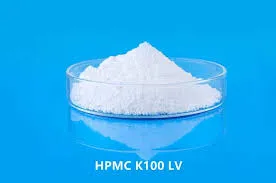
Nov . 26, 2024 02:21 Back to list
hpmc chemical
Understanding HPMC A Versatile Chemical Compound in Modern Applications
Hydroxypropyl methylcellulose (HPMC) is a semi-synthetic polymer derived from cellulose, a natural polymer abundantly found in the cell walls of plants. HPMC has gained significant attention in various industries due to its unique properties and versatility. This article explores the chemical composition, characteristics, and diverse applications of HPMC, illustrating its vital role in modern technology and manufacturing.
Chemical Composition and Structure
HPMC is produced through the etherification of cellulose with propylene oxide and methyl chloride. This process introduces hydroxypropyl and methoxy groups into the cellulose structure, enhancing its solubility and functionality. The degree of substitution, which refers to the number of hydroxyl groups replaced, can be controlled during synthesis, allowing manufacturers to tailor HPMC for specific applications. The resulting compound is a white, odorless powder that is readily soluble in cold water, forming a viscous solution.
Physical and Chemical Properties
HPMC exhibits several favorable physical and chemical properties, making it a valuable compound in numerous formulations. It is non-toxic, biodegradable, and chemically stable, which contributes to its safety in food and pharmaceutical products. HPMC has excellent film-forming capabilities, gelation properties, and viscosity control, rendering it suitable for use as a thickening agent, binder, or emulsifier. Additionally, its water-holding capacity is advantageous in various applications, allowing for improved texture and stability in products.
Applications Across Industries
hpmc chemical

1. Pharmaceuticals HPMC is widely employed in the pharmaceutical industry as a binding agent in tablet formulations and as a controlled-release agent. Its ability to create sustained-release profiles ensures that medications are delivered gradually into the bloodstream, enhancing their effectiveness and reducing side effects.
2. Food Industry In food products, HPMC serves as a thickener, stabilizer, and emulsifier. It is commonly used in sauces, dressings, and dairy products to improve texture and prevent separation. Furthermore, its properties make it an ideal ingredient in gluten-free products, providing structure and moisture retention without the use of traditional gluten sources.
3. Construction In the construction sector, HPMC is utilized in mortar, plaster, and tile adhesives. Its ability to improve the workability, adhesion, and water retention of these materials enhances the efficiency of applications and extends the open time for adjustments during construction.
4. Cosmetics and Personal Care HPMC is a popular ingredient in cosmetics and personal care products due to its thickening and film-forming properties. It can be found in lotions, creams, and gels, providing a pleasant texture and enhancing the overall performance of formulations.
5. Paints and Coatings In the paints and coatings industry, HPMC is used as a thickener and rheological modifier. It contributes to the viscosity and stability of paint formulations, ensuring an even application and improved drying times.
Conclusion
HPMC is a remarkable chemical compound that bridges the gap between natural and synthetic products. Its diverse applications across pharmaceuticals, food, construction, cosmetics, and paint industries underline its importance in modern technology and daily life. As research and development continue to explore new applications and formulations of HPMC, its role in enhancing product performance and safety will undoubtedly expand, solidifying its status as a cornerstone of many manufacturing processes. The adaptability and functionality of HPMC exemplify the innovative spirit of contemporary chemistry, pushing the boundaries of what is possible in material science.
-
Premium Cellulose Ether: Effective Liquid Thickener & Stabilizer
NewsAug.31,2025
-
HPMC for Tile Adhesive: Superior Bonding & Workability
NewsAug.30,2025
-
Premium Cellulose Ether: Effective Liquid Thickener Solutions
NewsAug.29,2025
-
HPMC for Tile Adhesive: Enhanced Bonding & Workability
NewsAug.28,2025
-
tile-bonding-additives-for-stronger-bonds
NewsAug.22,2025
-
construction-grade-rdp-for-wholesale-needs
NewsAug.22,2025







